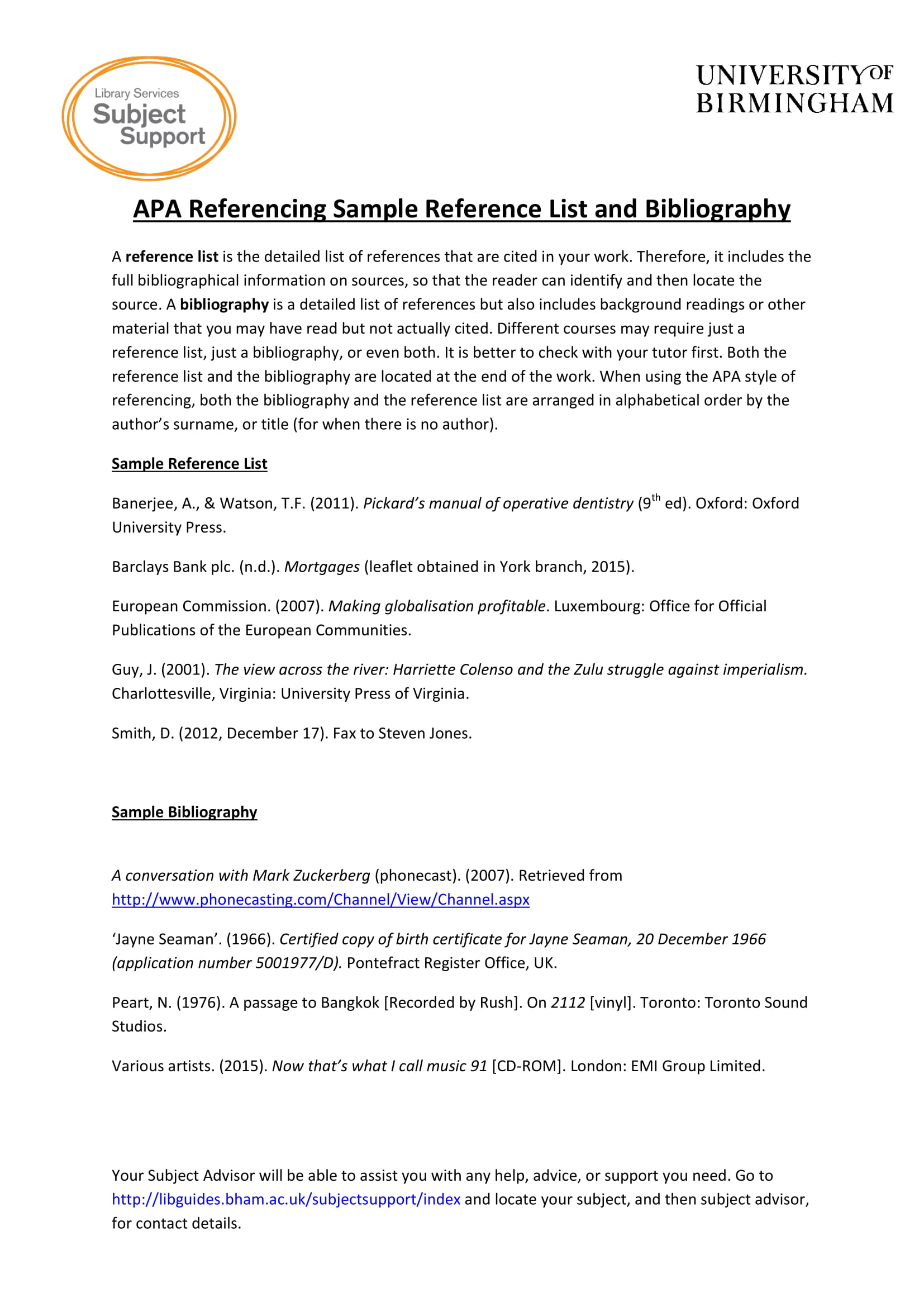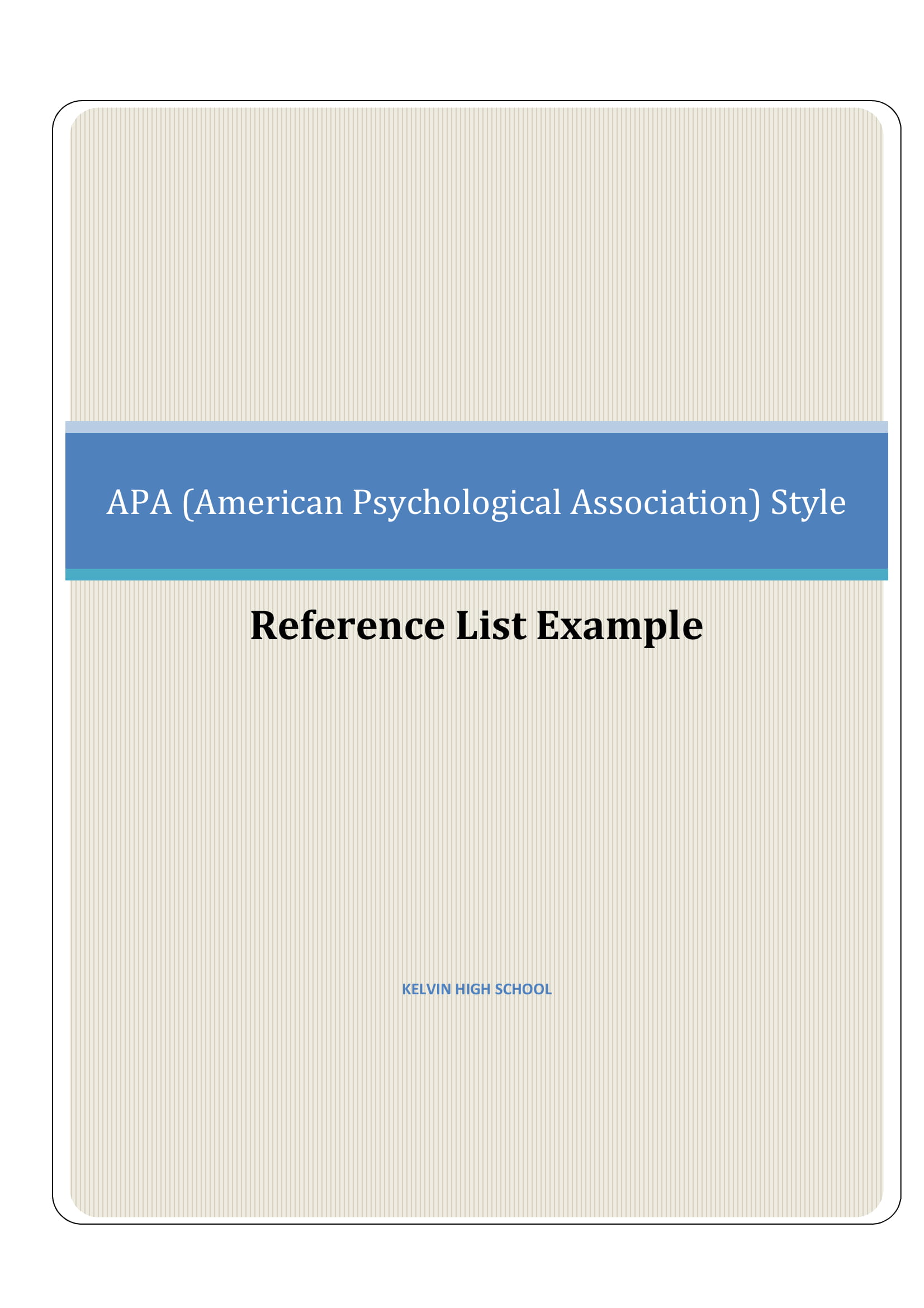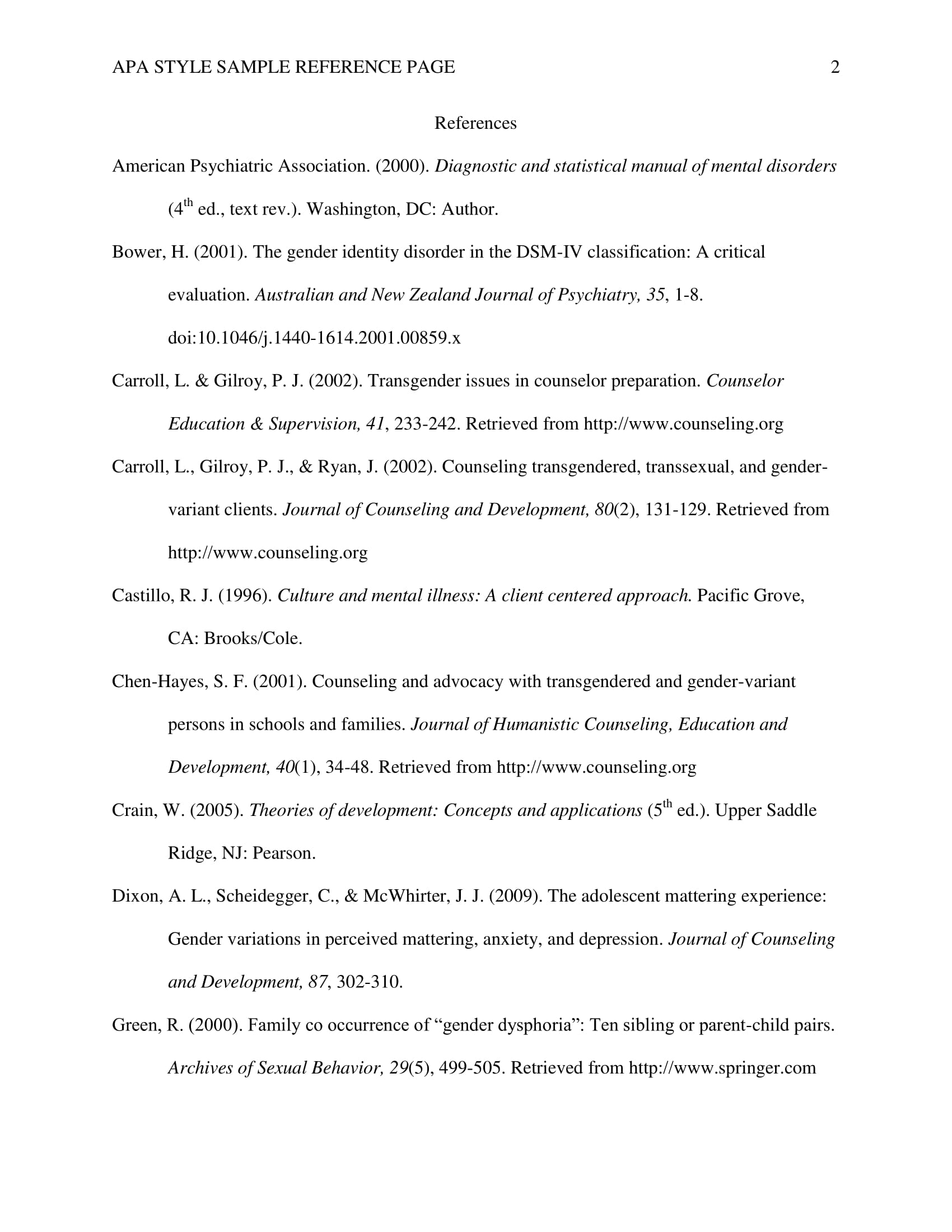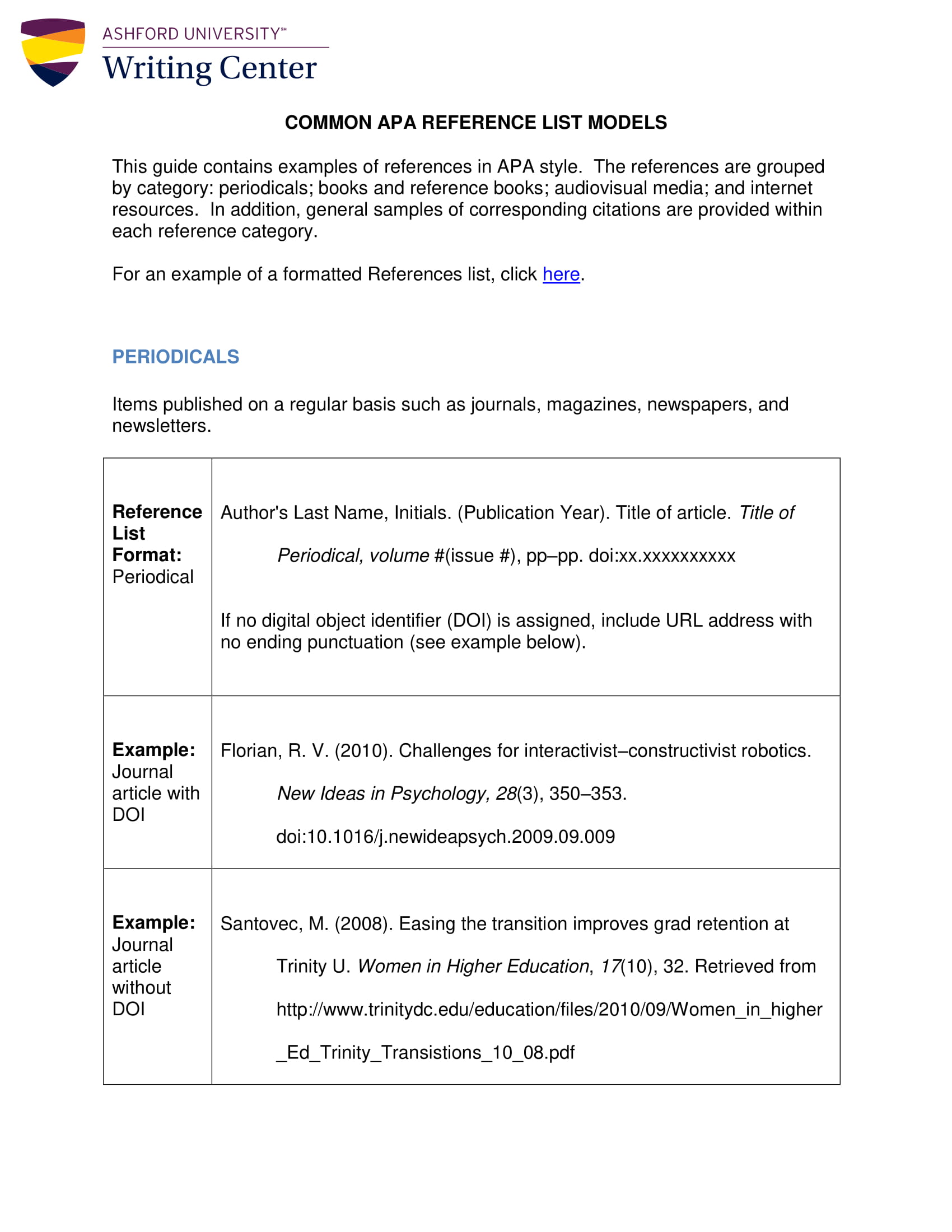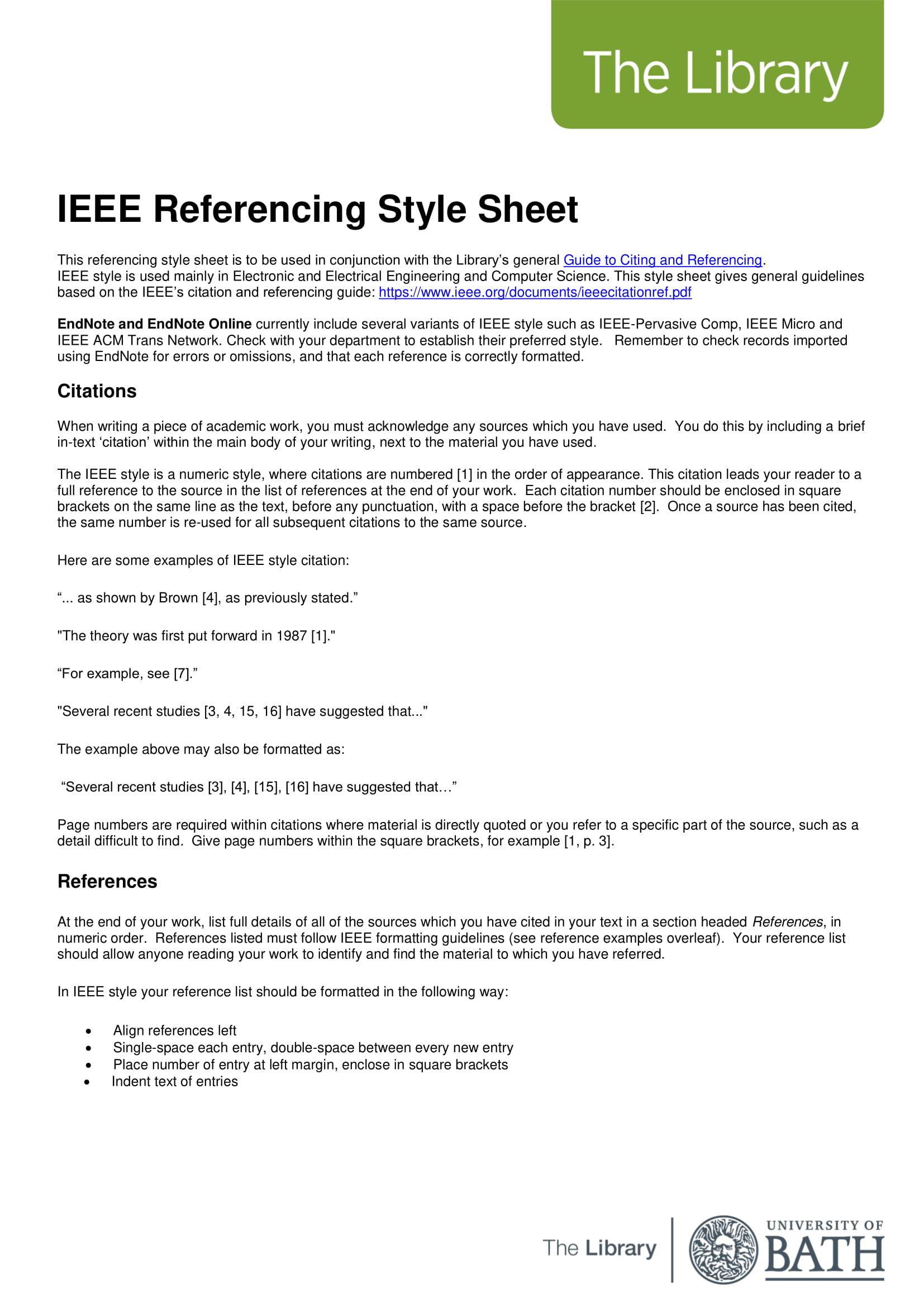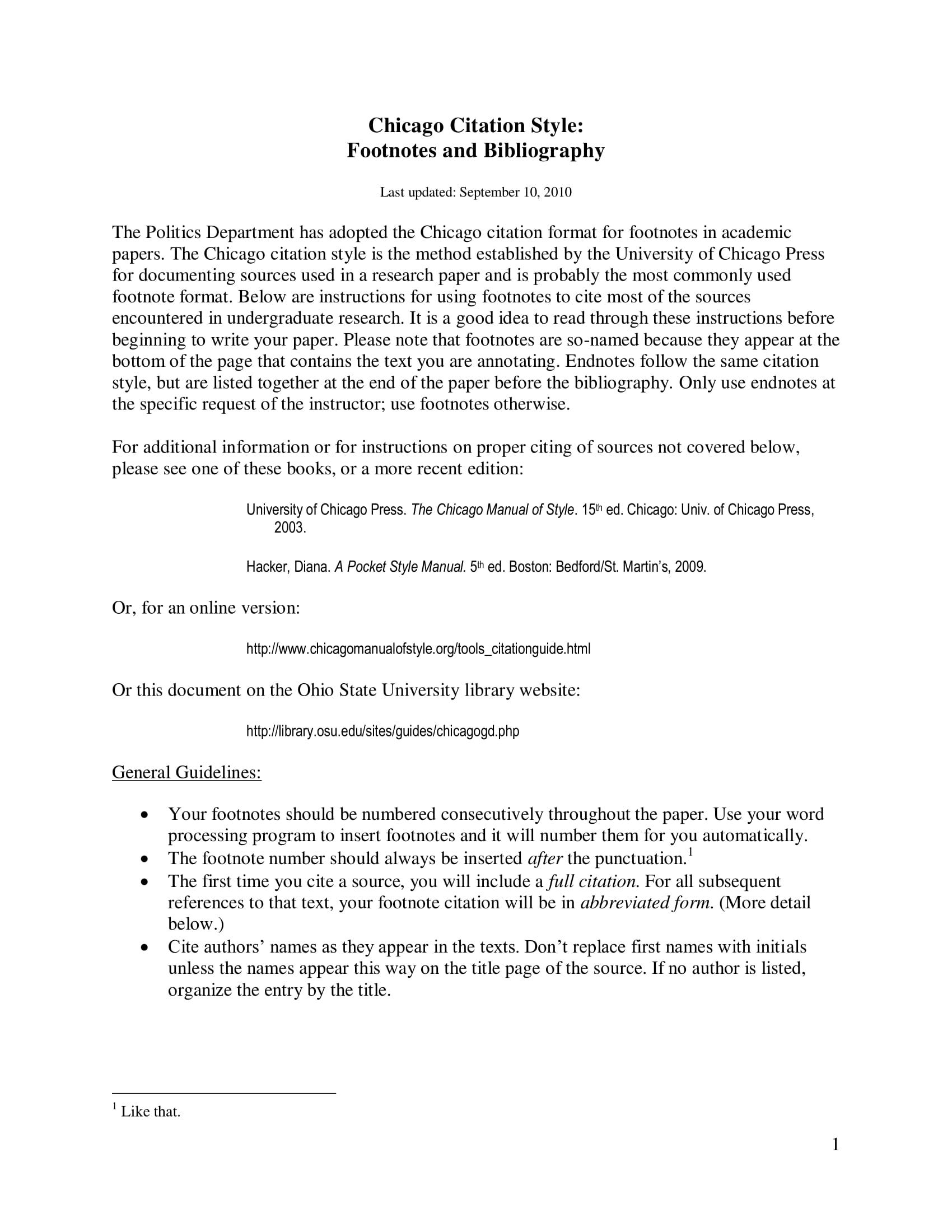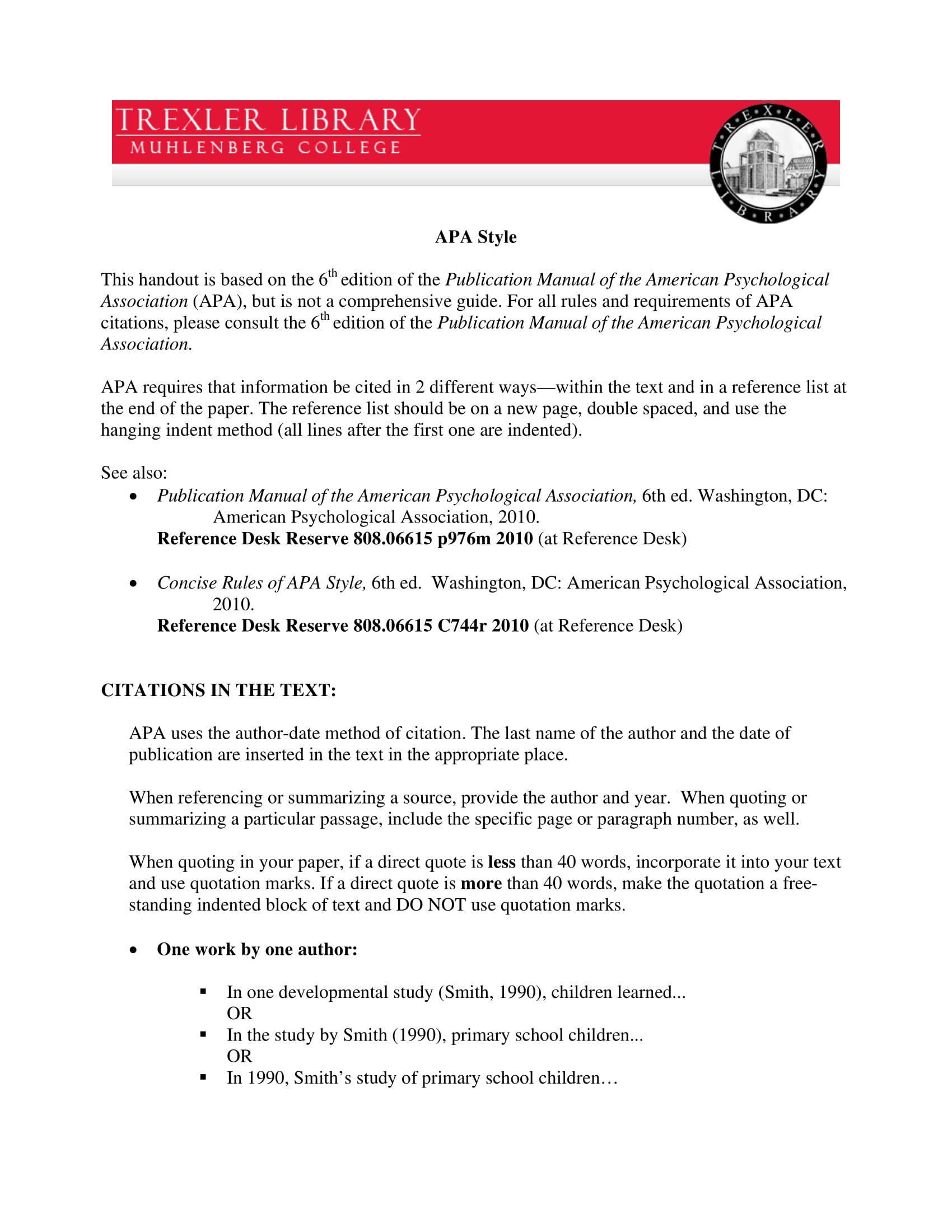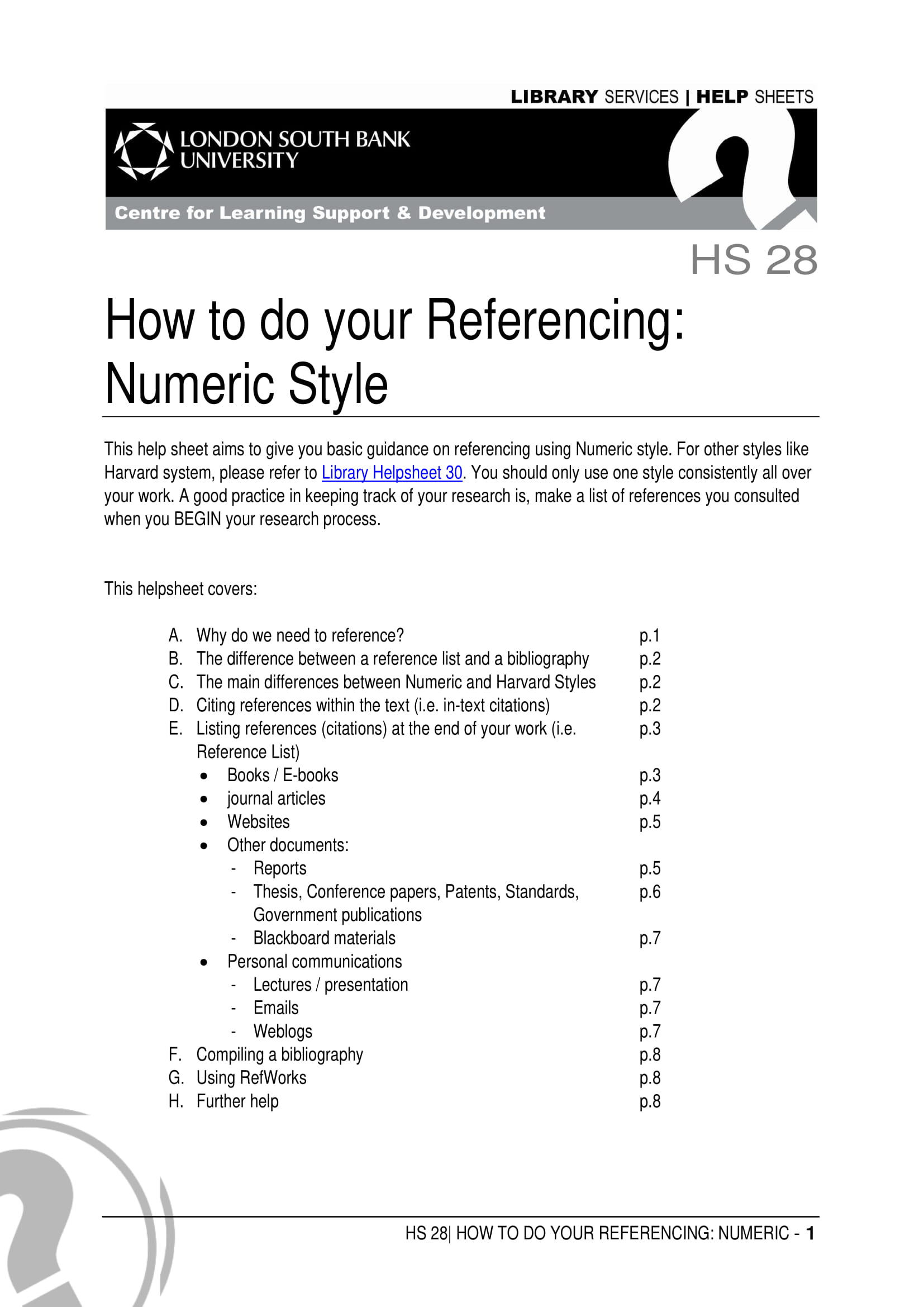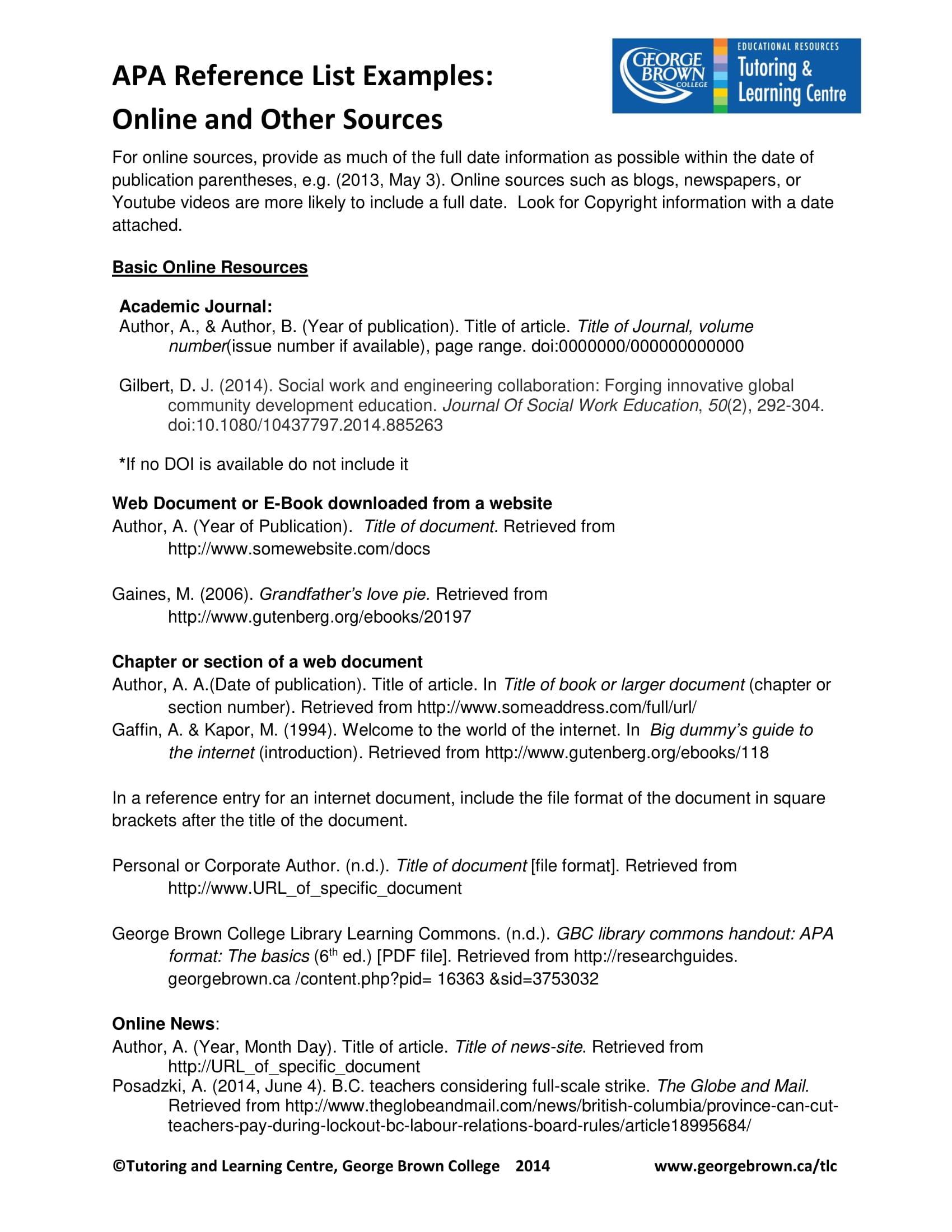9+ Reference List Examples to Download
When completing academic assignments, studies or researches, it is important that you cite he sources you have referenced or quoted in your work. Citing your references is important not only to help you avoid cases of plagiarism, but to also acknowledge of the writers and other published works that has influenced yours. You may also see management skills list and examples.
Writing academic papers not only require your original ideas and thoughts as the author, it also uses ideas and research of other authors, books, journals, websites and other credible scholarly sources. These other sources can be used to support your thesis and help you further convince the reader of the relevance and credibility of your claims; other sources can be also used as a topic for discussion, analyzing or critique in your own paper. You may also like grocery list examples.

Referencing is used in order to tell the readers where the original idea or quotations used in your paper came from. As mentioned earlier, it is used not only to avoid plagiarism, but to also give credit where credit is due. It gives you the opportunity to acknowledge the works done by other authors whom you have taken inspiration or some ideas from. You may also see wedding guest list examples.
In addition, it tells the reader that there are other sources that can directly support your argument and shows how your argument relates to the bigger picture.
APA Reference List and Bibliography Example
APA Referencing Guide and Reference List Example
Difference Between Reference and Bibliography
While writing for an academic paper or book, you will have to look for other sources to help you generate ideas or data. By doing this, you will have to reference or cite these other books or sources you have gathered ideas or data from. You may also check out contact list examples.
In this case, you will have to make your own reference or bibliography, but you should know that there are the differences between the two although they share some similarities. To help you with that here is a list of the key differences between a reference and bibliography:
- A reference implies that you are referring to someone or something and that you need to provide a list of sources. A bibliography represents the list of all the sources from which the paper has gone through to conceive an idea. You might be interested in how to use your email list to raise more money.
- A reference is a list of sources in your paper that you have quoted in-text, on the other hand, a bibliography is a list of all the sources you have consulted to generate an idea be it directly quoted or not.
- The arrangement of the sources in a reference list is alphabetically and numerically arranged, while it is only alphabetically arranged in a bibliography. You may also see to-do list templates and examples.
- A reference can be used to support an argument, but a bibliography cannot be used to support an argument.
Although both a reference and bibliography are used for the same purpose, the subtle differences between the two lies in the items that are included in them. The primary purpose of a reference is to achieve recognition and authentication of the research work, meanwhile a bibliography is used with the aim of giving the reader the exact information and sources relating to the topic. You may also like how to prepare your email marketing list and profits.
APA Style Reference Page Example
Common APA Reference List Model Example
Information to be Referenced
If you think published books and published sources are the only ones that need acknowledgement, think again. Any words, ideas, information, data taken from any other sources requires you to reference them in you paper. Reference when you are using words or ideas from:
- books and journal articles;
- newspapers and magazines;
- pamphlets or elegant brochures;
- films, documentaries, television programs or advertisements;
- websites or electronic resources;
- letters, emails, online discussion forums;
- personal interviews;
- lecturers or tutors (not always necessary, but check with your lecturer or tutor about their preferences before you draw on their ideas).
- Reference when you reprint any diagrams, illustrations, charts or pictures.
You may also see packing list examples.
While it is important to know what information you should reference it is also important that you know what information need not to be referenced in your paper. Here is a list of the information that needs no reference:
- writing your own observations or experiment results (for example, a report on a conducted experiment
- writing about your own experiences (for example, a reflective journal, reflective essay);
- writing your own thoughts, comments or conclusions in an assignment;
- evaluating or offering your own analysis;
- using ‘common knowledge’ or common facts that can be found everywhere and are most likely known by a lot of people or folklore;
- using generally accepted facts or information (It is better to ask your tutor or professor as this can vary on different disciplines of study).
You may also like quality checklist examples & samples.
Harvard Style Citing and Referencing Example
IEEE Referencing Style Sheet Example
Basic Rules in Making a Reference List
The reference list section of your paper must appear on the last portion or page of your whole academic paper. It provides necessary information about the location and how to retrieve this information in your paper. As it should, all the sources used in your paper must be cited in your reference list; likewise, all the information included in your reference list must be cited in your content. You may also check out to do checklist examples.
The reference list should be on a new page separate from the content of the paper, you need to label this page with the word “References” centered on the top part of the page but must not be written in bold. Here are other rules when making a reference list:
1. For each entry in your reference list, all lines immediately after the first line of should be indented one-half inch from the left margin. This is type of indention is called a hanging indentation. You might be interested in task checklist examples.
2. Last name, first name format should be used when citing the authors’ names. If the work has more than seven authors, list the first six authors and then use ellipses after the sixth author’s name. After the ellipses, list the last author’s name of the work. You may also see checklist examples in excel.
3. Alphabetized arrange the reference list by the last name of the first author of each work.
4. Entries should be listed in chronological order, from earliest to most recent, if there are multiple articles by the same author, or authors listed in the same order.
5. Use the full title of each journal of books used.
6. Maintain the punctuation and capitalization that is used by the journal in its title. You may also like checklist examples in pdf.
7. Capitalize all major words in journal titles.
8. Capitalize only the first letter of the first word of a title and subtitle, when referring to books, chapters, articles, or webpages; the first word after a colon or a dash in the title, and proper nouns.
9. Italicize titles of longer works such as books and journals. You may also check out registry checklist examples & samples.
10. Do not italicize, underline, or put quotes around the titles of shorter works such as journal articles or essays in edited collections.
Chicago Citation Style Example
6th Edition APA Reference Style Guide Example
Reference List Using APA Style
When using the APA Style format in making your reference list, there are certain rules to follow. Here is a list of these rules:
- Alphabetically arrange the reference list by the author’s surname or last name.
- If there are two to seven authors, use “&” before the last author .
- Write the first 6 authors followed by an ellipsis and add the last author when there are eight or more authors for one journal or book. Example: Krishnan, K. J., Reeve, A. K., Samuels, D. C., Chinnery, P. F., Blackwood, J. K., Taylor, R. W., . . . Turnbull, D. M.
- Italics should only be used for the following:
- Titles of journals and volumes
- Book titles
- Indent the paragraph on the second and the following lines in a reference.
- Use “Reference list” or “Literature list” as the heading on a separate new page on your paper.
You may also see start-up business checklist examples.
Numeric Style Referencing Example
Online and Other Sources APA Referencing Style Example
Using APA Style for In-text Citation
Here are the following rules in using the APA Style when citing sources or authors with the text of your paper:
1. Sources published on the same year by the same author are distinguished by a, b, c etc. after the year. For example: Hansen (1988a) and Hansen (1988b). You may also see hr checklist examples & samples.
2. Use the first words of the title and year of publication when a certain material has no identifiable author, . Journal titles, chapters or websites are written with quotation marks, but book titles, pamphlets or reports are written in italics. Example: Et enklere og mer rettferdig inntektssystem (1996)
3. Here is how you cite publications with multiple authors to which you refer several times in the text:
- 2 authors: name both authors each time you quote them. Example: Furseth and Everett (1997) – or – (Furseth & Everett, 1997). You may also like equipment checklist examples.
- 3, 4 or 5 authors: name all authors the first time you quote them. From then on use only the surname of the first author, followed by et al. Example: Ramaekers, Berghausb, Laarc and Drummer (2004), followed by Ramaekers et al. (2004)
- 6 or more authors: only give the first author’s surname, followed by et al. Example: Cheng et al. (2004)
4. It is important that name your source and cite the secondary references. For example: Johnson and Peters’ studies (as cited in Wagner, 1982)… You may also check out strategic planning checklist examples.
5. You have to give page numbers for the following:
- for direct quotations
- to cite a specific part of a source. It will help the reader locate the relevant passage in the text.
Conclusion
In general, giving proper citations and references to the sources you have used in order to have a better explanation and support on the arguments you made in your paper is must especially when making academic or scholarly papers. It helps you avoid cases of plagiarism and at the same time, you give the right credit to the original thought or idea you have followed or have taken inspiration from. A reference list is useful tool to find other related sources for your paper. You may also like cleaning checklist examples & samples.



